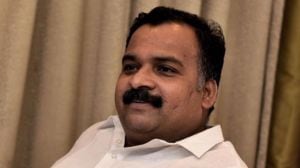Maharashtra moves cotton burden
2001-02: 53 lakh quintals, 2002-03: 24 lakh quintals, 2003-04: 3,200 quintals This is probably the first time a dipping graph has given the ...

2001-02: 53 lakh quintals, 2002-03: 24 lakh quintals, 2003-04: 3,200 quintals
This is probably the first time a dipping graph has given the Maharashtra government a reason to smile. For the first time in 25-odd years, ever since the Monopoly Cotton Procurement Scheme MCPS came into effect in 1973, the state8217;s bill for the commodity has come down to less than Rs 1 crore.
In 2001-02, the cash-strapped government had to fork out Rs 3,027 crore for 153 lakh quintals of cotton. The huge tab was at least partially responsible for the Vilasrao government8217;s decision to allow private players to poach on MCPS territory, which empowered the state to buy all the cotton produced in the state.
Maharashtra is estimated to have produced about 140 lakh quintals of cotton this year. Of these, nearly 17 lakh quintals were picked up by the Cotton Corporation of India by February 20. Private parties bought 68 lakh quintals and the rest is believed to have made its way outside the state.
If the government has any worry on the cotton front, it is the future of the huge purchase machinery. Of the 176 purchase centres launched this year, 117 registered zero purchase and have been shut down. A voluntary retirement scheme for 1,706 permanent and 3,700 seasonal employees of the official buying agency, State Cotton-growers8217; Cooperative Marketing Federation, is one solution. And a government resolution to this effect is already out.
Incidentally, the state8217;s low liability on the cotton front coincides with an all-round hike in prices. Under pressure from the Opposition, the government agreed to give Rs 2,500 for per quintal of the long-staple variety, up Rs 200 from last year. The other varieties, too, got an identical hike.
But with crop failures in the US and China pushing up global prices, Maharashtra farmers could easily fetch up to Rs 3,000 per quintal in the open market. Obviously, there were few takers for the government offer 8212; a fact the state quickly adopted as vindication of its decision to dump the monopoly purchase idea.
Incidentally, the cotton scenario this year has been exceptionally good. Against annual imports of up to 20 lakh bales till last year, the import this year has been just about one lakh bales, sources said. 8216;8216;In fact, the country can export about 6 lakh bales this year,8217;8217; they added.
But sceptics have questions. 8216;8216;Ask them what they8217;ll have to say if farmers flock back to them next year if international prices drop,8217;8217; said Vijay Jawandhia, a breakaway Shetkari Sanghatana leader. 8216;8216;We still have an import duty of just 10 per cent on cotton. If international prices fall next year, imports will again go up and our farmer will again lose out in the race.8217;8217;
When asked, a federation official predictably said, 8216;8216;We will always be there if farmers don8217;t fetch enough price in open market.8217;8217;
From within, though, it hopes not to be in that situation ever, what with cumulative MCPS costs adding up to over Rs 3,000 crore.
- 01
- 02
- 03
- 04
- 05































